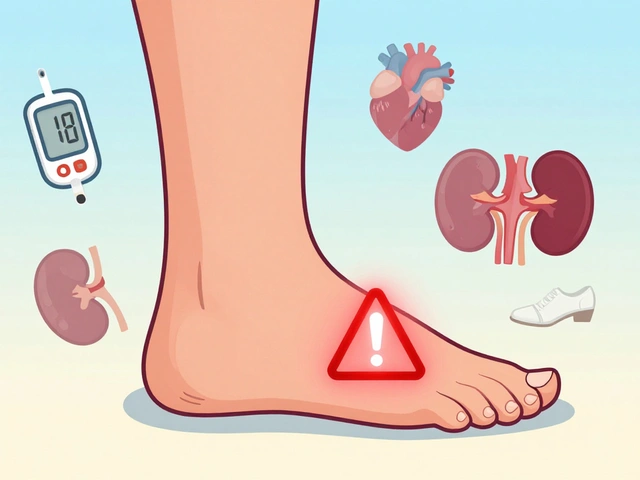Graves disease: Symptoms, Causes, and Treatment Options
When dealing with Graves disease, an autoimmune disorder that drives the thyroid to overproduce hormones. Also known as Basedow's disease, it can speed up metabolism, cause weight loss, and affect the eyes. hyperthyroidism, the condition of excess thyroid hormone is the most frequent outcome of Graves disease, so understanding one helps you manage the other.
Beyond the hormone surge, many patients notice thyroid eye disease, inflammation and swelling behind the eyes that can lead to bulging, discomfort, and vision changes. This eye involvement is directly tied to the autoimmune activity that fuels Graves disease. Recognizing the link early lets you seek treatments that protect both thyroid function and eye health.
How the Immune System Triggers the Thyroid
The body’s immune system mistakenly creates antibodies that attach to the thyroid‑stimulating hormone (TSH) receptor. These autoimmune thyroid disorder, a group of conditions where the immune system attacks thyroid tissue push the gland into overdrive. The result is a cascade: higher heart rate, heat intolerance, tremors, and sometimes mood swings. Knowing the exact mechanism helps you talk to a doctor about targeted therapies rather than just symptom relief.
When it comes to treatment, the options fall into three main buckets. First, antithyroid medications such as methimazole or propylthiouracil block hormone production. Second, radioactive iodine therapy, a non‑surgical approach that destroys overactive thyroid cells offers a one‑time solution for many adults, though it may lead to hypothyroidism later. Third, surgery removes part or all of the gland, which is useful for large goiters or when radiation isn’t suitable.
Beta‑blockers like propranolol don’t fix the hormone imbalance, but they calm rapid heartbeats and shaking while you wait for other treatments to take effect. Lifestyle tweaks—limiting caffeine, getting enough sleep, and monitoring weight—also make a noticeable difference. Graves disease isn’t a one‑size‑fits‑all condition; the best plan blends medication, possible radioactive iodine, and supportive care tailored to your age, severity, and eye involvement.
In the collection below you’ll find articles that break down each medication, compare treatment routes, and offer practical tips for managing side effects. Whether you’re looking for a quick rundown of antithyroid drugs or an in‑depth look at eye‑specific therapies, the posts ahead give clear, actionable guidance to help you stay ahead of the disease.
Methimazole and Thyroid Eye Disease: Complete Guide for Patients and Clinicians
A detailed guide on how methimazole works, its impact on thyroid eye disease, monitoring tips, adjunct treatments, and FAQs for patients and clinicians.






